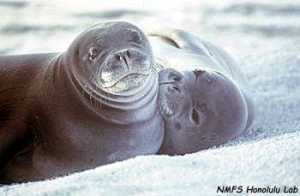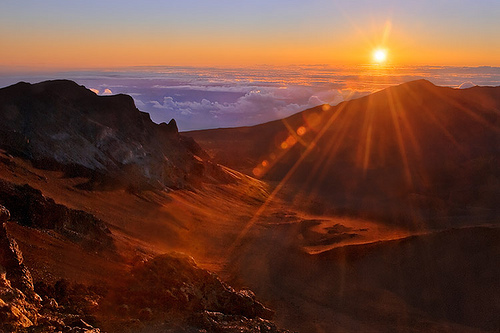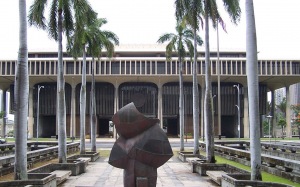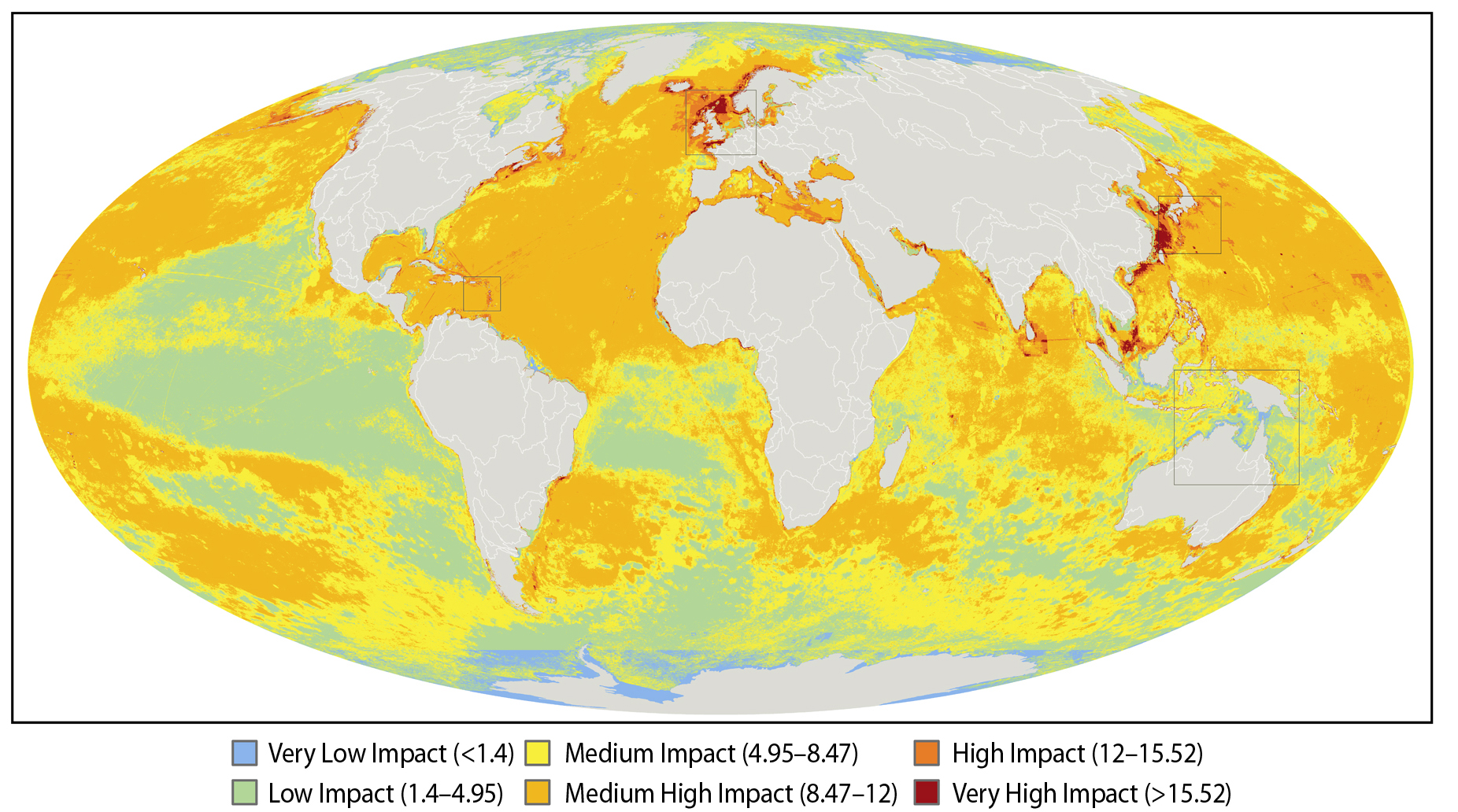Blog
News, updates, finds, stories, and tidbits from staff and community members at KAHEA. Got something to share? Email us at: kahea-alliance@hawaii.rr.com.
- In 1994, elevated sea temperatures killed over 90% of the living corals of American Samoa from the intertidal zone to a depth of 10 meters and fishing catches declined drastically in the wake of the coral death.
- Climate Change will shift rainfall patterns causing prolonged droughts in some regions. Each El Niño event has resulted in water shortages and drought in Papua New Guinea, Marshall Islands, Federated States of Micronesia, American Samoa, Samoa, Tonga, Kiribati and Fiji. More frequent El Niño events also bring an increased risk of tropical cyclones, particularly for Tuvalu, Samoa, Tonga, Cook Islands and French Polynesia.
- The potential socio-economic impacts of climate change on the smaller Pacific island countries were estimated in a series of vulnerability studies. Depending on the worst case scenario (one metre sea level rise), the studies suggest that sea level rise will have negative impacts on tourism, freshwater availability and quality, aquaculture, agriculture, human settlements, financial services and human health. Storm surges are likely to have a harmful impact on low-lying islands.
Monk Seals Compete with Fishing Industry for Food
From Melissa:
Much is being done in the way of critical habitat designation to ensure the survival of the Hawaiian monk seal. Is it enough though? These precious creatures inhabit the Northwest Hawaiian Islands (NWHI) and are at high risk of becoming extinct due to death caused by starvation, predation, males accidentally killing females in the mating process and entanglement in fishing gear.
enough though? These precious creatures inhabit the Northwest Hawaiian Islands (NWHI) and are at high risk of becoming extinct due to death caused by starvation, predation, males accidentally killing females in the mating process and entanglement in fishing gear.
NOAA decided last year the Caribbean monk seals had become extinct, and has observed that the Hawaiian breed has reached a population of about 1,200, declining by abut 4 percent a year during this decade. Federal Judge Samuel King noted nine years ago that it was likely that the fishing industry “contributes to the starvation of the monk seals,” but fisheries strongly deny it.
For whatever reason, the seals apparently are not getting enough to eat. Fitted with compact video cameras in a National Geographic project from 1995 to 2002, they were seen dining on a wide variety of crustaceans, squid, octopus and fish, competing for food with large and hungry ulua.
Should more restrictions and rules be enforced in the critical habitat of the Hawaiian monk seal? As of today, eight fishing boats based out of Honolulu are permitted to fish in certain areas of the NWHI, one of which, very recently was caught fishing in a restricted area. These vessels catch approximately half of the locally landed bottomfish in Hawaii. By revoking these permits, the fish populations will likely replenish, leading to more food for the monk seals thus less starvation. Could this be the way to go to further protect the monk seals or would it just enrage the fishing industry?
To read the full article follow this link:
To learn more about this issue please follow the link provided:
Action Alert: Unite to Save the Scared Summits!
 Plans for major construction in the sensitive ecosystems of our most sacred summits continue to push forward, despite significant opposition from the community. The University of Hawaii has filed two environmental impact statements — one for the world’s largest telescope in the world’s only tropical alpine desert, and another for a duplicative solar telescope in one of the most threatened national parks in the U.S. Both of these projects can be built in less sensitive areas.
Plans for major construction in the sensitive ecosystems of our most sacred summits continue to push forward, despite significant opposition from the community. The University of Hawaii has filed two environmental impact statements — one for the world’s largest telescope in the world’s only tropical alpine desert, and another for a duplicative solar telescope in one of the most threatened national parks in the U.S. Both of these projects can be built in less sensitive areas.
Though both summits are protected as conservation districts, where the law expressly discourages construction, the University refuses to compromise, insisting that these giant, intrusive structures be built where they will cause the most harm.
Don’t let good science be used to justify unnecessary ecological destruction and cultural disrespect. Take action now to defend our sacred, fragile summits.
1)
Protect Haleakala — the House of the Sun — from another, unnecessary solar telescope
2) Defend the Sacred Summit of Mauna Kea from the World’s Largest Telescope
Public hearings on the proposal to build the world’s largest telescope on Mauna Kea are being held now. All meetings are 5 to 8 p.m., with an open house in the beginning, followed by formal presentations, and then comments from the public.
Public Hearings on the New Mauna Kea Telescope Proposal
June 16 (Tuesday) Waimea – Waimea Elementary School Cafeteria
June 17 (Wednesday) Hilo – Hilo High School Cafeteria
June 18 (Thursday) Puna – Pahoa High School Cafeteria
June 22 (Monday) Ka’u – Ka’u High/Pahala Elementary School Cafeteria
June 23 (Tuesday) Hawi – Kohala Cultural Center
June 24 (Wednesday) Kona – Kealakehe Elementary School Cafeteria
June 25 (Thursday) Honolulu – Farrington High School Cafeteria
The Draft EIS is available on the Project website – www.TMT-HawaiiEIS.org – and hard copies can be found at public libraries throughout Hawaii.
Get action alerts like these sent directly to your inbox by signing up with KAHEA’s action alert network at www.kahea.org.
We paid for what?!
From Melissa:
We, the taxpayers, paid city workers overtime to illegally dump cement into our precious Ma’ili’ili stream that supports native and endemic species. Guess what? Now we’re paying them to clean it up… illegally! C’mon City of Honolulu, really?! Check this out:
Holding the Navy Accountable on Two Fronts
From Marti:
The Navy has been on the hot seat lately for the damage it has caused in Hawaii nei. In central and western Oahu, the Environmental Protection Agency and the state got a commitment from the Navy to clean up any remaining contamination at two Superfund sites – one in Lualualei near the naval munitions storage area and the other in Wahiawa. While preliminary investigations have indicated that no immediate threats currently exist at the sites, soil contaminants at the sites include PCBs, volatile organics, semi-volatile organics and metals. PCBs can cause cancer in animals and adversely affect the nervous, immune, and endocrine systems in humans.
“Our agreement with the Navy and the state finalizes the process that the Navy will follow to complete the investigation and clean up of any remaining chemical contamination at both sites.” said Keith Takata, director for the EPA Pacific Southwest Region’s Superfund Division.
The agreement with the Navy is open to public comment. Get your say in now by visiting: www.epa.gov/region09/NavalComputer
Check out the full article at The Hawaii Independent: http://www.thehawaiiindependent.com/hawaii/oahu/2009/04/02/epa-us-navy-agrees-to-clean-wahiawa-lualualei-superfund-sites/
 And, on the South shore of Oahu, controversy is brewing as the state attempts to hold the Navy financially responsible for the carnage of coral from the USS Port Royal grounding in February 2009. Ten acres of ancient coral was destroyed! Chunks as large as cars are still bouncing around on the ocean floor causing further damage.
And, on the South shore of Oahu, controversy is brewing as the state attempts to hold the Navy financially responsible for the carnage of coral from the USS Port Royal grounding in February 2009. Ten acres of ancient coral was destroyed! Chunks as large as cars are still bouncing around on the ocean floor causing further damage.
“There is a critical need for the U.S. Navy to mitigate the damage which has occurred, which continues to occur, and which will get worse with the upcoming south summer swell,” said Laura H. Thielen, chairwoman of the DLNR, in the letter.
“We urge the U.S. Navy to commit appropriate resources to rescue disturbed or destroyed coral, remove or stabilize rubble, and protect loose live coral that has resulted from this incident.”
Here, here!! Systems that ensure the “polluter pays” are a completely reasonable (and actually quite capitalist) approach to addressing damage to our environment. The Navy’s negligence destroyed a significant part of our ocean environment. They should be required to pay for the injury they have caused and do all they can to prevent further damage.
What the Navy does in this situation will be a key indication of what the public can expect from their activities affecting the Papahanaumokuakaea Marine National Monument in the Northwestern Hawaiian Islands (you will recall the Navy plans to intercept chemical-laden missiles over Nihoa – the only home of at least four endangered species and one of the most significant cultural and archeological sites in the archipelago).
Check out the full article here: http://www.honoluluadvertiser.com/article/20090402/NEWS11/904020369/1001
Red-Rover, Red-Rover, Cross on Over

Today is Cross-Over Day at the State Capitol, the half-way point in the legislative process… and the day the overwhelming majority of bills are declared officially dead (until they can be resurrected next session). Here is a run-down of the bills KAHEA is following that are still alive this session. Click on the bill numbers to get the latest update on their status.
GOOD BILLS
SB 1088 - Improves enforcement of the public’s right to beach and mauka access by creating a citizen suit provision. Call Rep. Sharon Har at 808-586-8500 to ask that it be heard before the House Water, Land, and Ocean Committee.
HB 1663/SB 709 - Bans the genetic modification of taro in Hawaii. (Watch these ones closely. Like last year, amendments could turn them against the interests of Haloa, taro farmers, and taro consumers).
SB 701 – Establishes a moratorium on the siting of landfills along the Leeward Coast. This is an important bill to help protect the public health of Waianae Coast residents, unfortunately it has a lot of hearings to get through. Call Rep. Rita Cabanilla at 808-586-6080 to express your support.
SB 86 – Establishes the Makua Valley Reserve Commission to allow for community involvement in the management of Makua Valley. This bill also has a lot of hoops to get through. Call Rep. Ito at 808-586-8470 to advocate for its first hearing.
SB 1199 – Designates certain state waters surrounding the island of Molokai as the Molokai Community-Based Subsistence Fishing Area. Protecting the health of the shoreline is critical to Molokai’s economy welfare, unfortunately commercial fishers and aquarium collectors want to continue to take from these coffers. Call Rep. Calvin Say at 808-586-6100 to ensure this bill gets referred to the Water, Land, and Ocean Committee.
BAD BILLS
HB 1174 - Transfers management of the sacred summit of Mauna Kea to the lease-holder/developer, the University of Hawaii. Public opposition successfully defeated three similar bills earlier this session. Call Sen. Jill Tokuda at 808-587-7215 to urge this bill not be heard. Check out our previous posts to learn way this bill is the best way to undermine protections for Mauna Kea.
HB 1226 – Allows federal preemption of all state and local regulations on genetic modification (except taro). Labelled the Worst Idea of 2009… hopefully it won’t go any farther.
SB 1108 – Extends the effective date of the Aha Kiole Advisory Committee. Having a community-based system for managing our fragile resources is exactly what Hawaii needs, but without adding any additional safeguards to this existing system means it could be misused again the way WESPAC did last year.
HB 640 – Exempts certain developments affecting public rights-of-way (like trails) from completing an environmental impact statement. This totally undermines one of the few opportunities for public oversight of construction in Hawaii. Call Sen. Mike Gabbard at 808-586-6830 to ask it not be heard in the Environment Committee.
SB 1311 – Exempts the University’s Institute of Marine Biology from all permitting requirements for all activities in Kaneohe Bay. Our nearshore waters are our most valuable resource and the research being conducted in them should meet the highest standards of the precautionary principle to ensure that no harm comes to them. Help stop this bill by calling Rep. Calvin Say at 808-586-6100 to ask that it not be heard in the House.
HB 1741 – Raids the Natural Area Reserve System fund to make up for part of the budget shortfall. While the money in this fund is crucial to protecting Hawaii from invasive species, there isn’t nearly enough to make a dent in the budget shortfall. Instead, the state should make the foreign telescope owners on Mauna Kea pay rent for use of state lands… like the law requires.
HB 1712 – This is the same “Right to Fish” bill from years passed that paralyzes the DLNR from taking any management actions to protect Hawaii’s marine resources. If we are really interested in protecting our environment, then the goal should be to give DLNR more tools, not less, to do the job and be held accountable.
Mark your calendars: the next major deadline for these bills is April 9th.
If you want to stay involved, you can sign up for KAHEA’s action alert network by clicking here. You can also get hearing notices on any bill you are concerned about by clicking here. On Oahu, some hearings are aired live on “Capitol TV,” Olelo channel 53.
Now, where did we leave those things?

UH, the Army and NOAA are getting around next week to looking for chemical weapons dumped off the Waianae Coast in the 1940s. A public report released in 2001 by the Army’s Historical Research and Response Team identified over 4,000 tons of dumped chemicals munitions, including hydrogen cyanide bombs, cyanogens chloride bombs, mustard bombs and lewisite.
 In the past, the Army has assured community members that chemical munitions will dissipate before causing any serious damage or that the pressure and cold temperatures of the depths of the ocean will render munitions inert–at least, in theory. In reality, containers corrode over time, releasing the chemicals into the ocean. The longer the chemicals remain in the ocean, the greater the chances for a rupture or leak.
In the past, the Army has assured community members that chemical munitions will dissipate before causing any serious damage or that the pressure and cold temperatures of the depths of the ocean will render munitions inert–at least, in theory. In reality, containers corrode over time, releasing the chemicals into the ocean. The longer the chemicals remain in the ocean, the greater the chances for a rupture or leak.
‘There are a number of avenues of risk associated with this. The highest is to marine life. In small doses chemicals can accumulate in animals and work their way up the food chain. There are also impacts on the reproductive capabilities of some species, in addition to the lethality of higher doses.” – Craig Williams, Chemical Weapons Working Group
Next week’s effort is part of an eventual plan to attempt to remove or destroy in place dumped munitions off the Waianae Coast. The communities along the Waianae Coast have for years advocated for clean-up, over Army objections.
“If you’re telling the community that there is nothing to be afraid of, and that it (ordnance) can stay in the ocean without any consequences, then by the same token you should be able to remove it.” – Colleen Hanabusa, State Senator, 21st District
Star-Bulletin Coverage at: http://www.starbulletin.com/news/20090225_Depth_Chargers.html
killing the canary
From Marti:
I was listening to this on the radio, and the topic of climate change and ocean resources got me thinking.
Effects being felt by islands in the Pacific are often mentioned in the discussion about the health of our oceans as “early indicators” of the affects of climate change. Bleaching and disease in fragile coral reefs supporting marine ecosystems caused by temperture changes. Sea level rise forcing relocations of island residents. Ocean acidification with unknown consequences. Climate change leaves these islands less able to fend off effects of catastrophic storm events by degrading protective reefs. They decimate an important ocean food resources, depriving islands of their ability to maintain food independence.
Instead of clamoring to make change, and make restitution to these people and places, the continents are instead holding up Pacific islands as”canaries in the mine shaft”–harbingers of things to come for other presumably more important places like the continental U.S. or Europe.
The widely publicized NCEAS map of human impacts to the world’s oceans splits the entire Pacific region, and Hawai`i is not shown at all. (To their credit, Hawaii is there–and can be viewed in the KML version of the map, viewable in GoogleEarth.)
As a lifelong resident of one of these “canaries,” I am extremely concerned that the rapid rise in sea level and sea temperature will mean the loss of our islands – our homes, our communities and our way of life. It is likely, if not inevitable, that the hundreds of unique indigenous cultures in the Pacific–which have existed and developed over millenia–will not be able to adapt to catastrophic environmental changes occuring over the space of 50 to 100 years.
What is most frustrating is these catastrophic changes are the product of unsustainable lifestyels and practices of industrialized nations like the U.S. and Europe, not the Pacific, where the impact isbeing the most directly experienced. This occurs in the context of the well-documented legacy of post-contact 19th and 20th century Pacific imperialsm–in which world powers fought for ownership and dominance of Pacific Islands with little or no concern for the people of these places. The effects of this legacy are still keenly felt throughout Oceania.
From the Ministerial Conference on Environment and Development in Asia and the Pacific 2000:
Their report concludes:
“The options for the Pacific islands, other than continuing to berate the industrial nations on their lack of concerted action, include migration, foreshore stablilisation, resettlement and decentralisation to adapt to the impacts of climate and sea-level changes.”
While global climate change is indeed, a global problem, it is a problem with consequences unequally shared.
Add your voice! Friends of the Earth has launched a Climate Equity Campaign, urging action to assist those most impacted by climate change. Check it out here.







